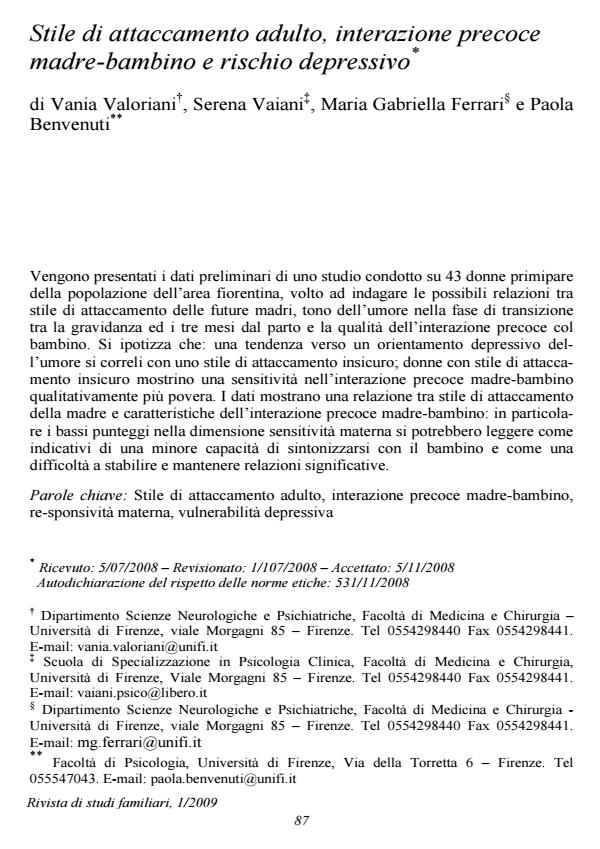Stile di attaccamento adulto, interazione precoce madre-bambino e rischio depressivo
Journal title RIVISTA DI STUDI FAMILIARI
Author/s Vania Valoriani, Serena Vaiani, maria Gabriella Ferrari, Paola Benvenuti
Publishing Year 2009 Issue 2009/1 Language Italian
Pages 17 P. 87-103 File size 175 KB
DOI 10.3280/FIR2009-001007
DOI is like a bar code for intellectual property: to have more infomation
click here
Below, you can see the article first page
If you want to buy this article in PDF format, you can do it, following the instructions to buy download credits

FrancoAngeli is member of Publishers International Linking Association, Inc (PILA), a not-for-profit association which run the CrossRef service enabling links to and from online scholarly content.
Adult attachment style, early mother-infant interaction and maternal depressive risk - This report presents the preliminary data from a study conducted on 43 (primiparae) first time mothers with the aim of investigating possible links between the attachment style of the mothers to be, their mood disturbances during the transitional phase from pregnancy to early post-partum and the quality of their early interaction with the baby. We postulated that women with insecure attachment would show poorer sensitivity in the motherinfant interaction and a tendency towards a potentially depressed mood. The results established a link between the mother’s attachment style and the quality of the early mother-infant interaction: particularly significant were the low scores in the area of maternal sensitivity which might be indicative of a reduced ability to attune to the baby’s needs and difficulty in establishing and maintaining meaningful relationships.
Key Words: Adult attachment style, early mother-infant interaction, maternal responsiveness, depressive risk
Vania Valoriani, Serena Vaiani, maria Gabriella Ferrari, Paola Benvenuti, Stile di attaccamento adulto, interazione precoce madre-bambino e rischio depressivo in "RIVISTA DI STUDI FAMILIARI" 1/2009, pp 87-103, DOI: 10.3280/FIR2009-001007